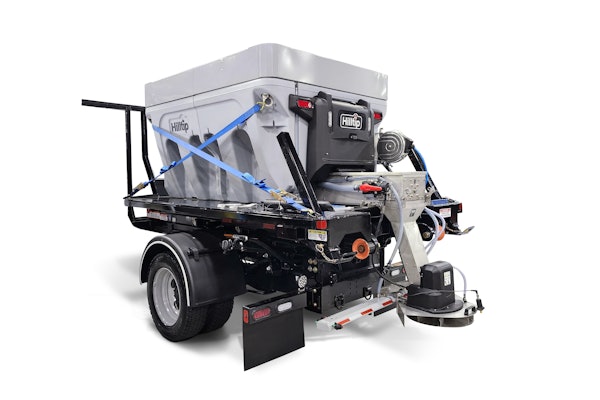
As the owner of your landscaping company, it’s important that you are able to create an atmosphere at the office that your employees will enjoy.
Employees want to feel that they are appreciated for what they bring to the table, and they desire a work environment that’s supportive while offering ample opportunities to showcase their skillsets.
When it comes to employee satisfaction, take a look at what human resource professionals have to say about keeping your workers content and showing them they are valued at your company.
Showing employees they are valued
Mike Gaydos, current HR director for ExOne and former director of human resources, people and performance with LandOpt, helped establish many of the HR programs currently in effect with LandOpt, and in this role, he learned that making sure your employees know they are valued is sometimes half the battle.
“Everyone wants to feel valued,” he says. “Everyone wants to feel like they’re part of something, no matter what their position is. It’s important that everyone feels valued and like they’re contributing because it gives them a sense of ownership in the company.”
Gaydos adds that this mindset applies to all size businesses, but it becomes increasingly important when it comes to smaller companies with employees that wear multiple hats.
“With 11 employees, you have the same challenges as you do with 11,000 when it comes to (feeling valued), and I think a lot of it is just communication,” he says. “Keep the lines of communication open, and make sure they know they are more than just a number.”
At LandOpt, Gaydos says the team comes together for weekly Monday meetings for about half an hour to discuss updates on projects, as well as to simply talk to each other about how interactions between departments can be improved.
Along with these weekly meetings, Gaydos says the company tries to have a company gathering once a quarter where they can socialize, eat and meet new hires in a relaxed atmosphere. He adds that meetings like this also help give new hires a sense of what the company is all about.
“It’s vitally important from a retention standpoint, also,” he says. “Valuing what our team members can bring to the table is vitally important to helping develop that buy-in from them. It’s hard to create the family feel but it’s even harder to keep it, and that’s something we always make sure we’re keeping here.”
Compensation and benefits
Most companies offer incentives, compensation and a slew of benefits, and according to Gaydos, it’s a good idea for landscape companies to be willing to offer a healthy balance of each in order to attract a wider variety of quality employees.
“In the recruiting process, you want to be able to offer as many benefits as you can,” he says. “Financially, you want to be able to bring somebody in based on their worth, market value and what they can bring to the table. You need to be as competitive as you can in the marketplace, but you also need to keep within the bounds of what your budget allows you to do.”
Whether you’re dealing with new or existing employees, Gaydos recommends getting to know every member of your team so you can adequately gauge what type of incentive is most appealing to them personally.

Company culture, mistakes and advice
Along with offering employees benefits specific to their wants and needs, Gaydos says that creating a positive company culture is one of the most important steps to keeping employees satisfied.
“It’s vitally important to the survival of your company because if you don’t have a positive environment and an environment where people want to come in to work and be part of a team, then you don’t have a team,” he says. “It takes one person or one cancer in the group to bring that down. So, if you have a positive environment where you have open communication and you can talk about things, I think that keeps employees engaged and it keeps them wanting to be with your company.”
In his time working in HR for the green industry, Gaydos says some of the biggest issues he saw involved a lack of listening, communication and initiative on the part of managers. Many times, he saw managers ignore red flags and attempt to sweep problems under the rug instead of dealing with them head on.
“When you have issues that arise, you need to address them head on,” he says. “It may not be the most liked decision by the team but it’s a decision that you feel is for the betterment of the team and the company.”
Another problem he’s noticed over the years deals with newly hired employees not matching up to the company culture. When interviewing potential candidates for a position, Gaydos recommends taking time to research the candidate to see how that person fit in with the former company culture, as well as taking time to fully explain to the individual what your company culture is all about.
“My philosophy is when you hire someone, one of the most important things is that you hire for culture fit,” he says. “You have to make sure the person coming in is a fit for the feel and the vibe of the team and culture that you have. Because from a skillset standpoint, you can teach and train on skills, but if it came down to hiring someone for an attitude versus a skillset, I’ll take attitude over skillset every day.”
Overall, Gaydos advises HR professionals in the green industry to take time to talk with and get to know fellow employees. By establishing these types of relationships, you’ll be able to help ensure employees feel invested in the long-term growth and health of the company, as well as giving them a voice in how things can be improved.
“A strong HR initiative for companies, no matter the size of the company, is keeping their employees happy, engaged and bought in to the culture,” he says. “That’s done by creating a positive work environment, having open communication, providing them the tools they need to be successful in what they do, being honest and upfront with what’s happening in the company and what the direction is and asking for their input.”











